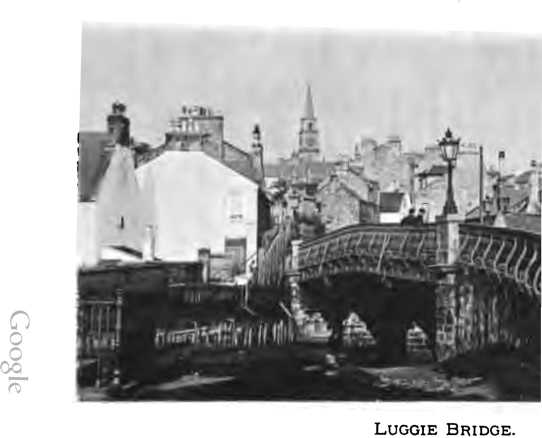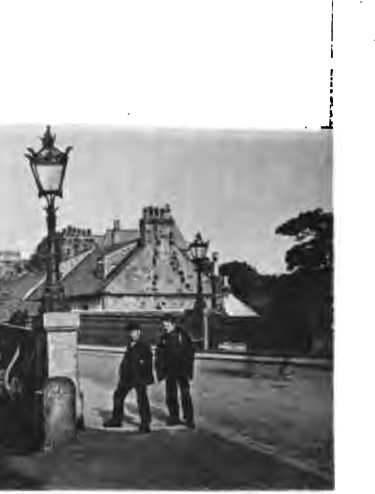|
In 1672 William, Earl of
Wigton, built a bridge of three arches over the Luggie—the old bridge
being quite ruinous.
The building of this new
bridge is said to be “a maist necessary and useful bridge for the saife
passage of all persons who travel from Edinbro' and Stirling to Glasgow
and Dumbarton, being situated on the highway leading to and fro these
touns.”
The earl, in
consideration of the expenses he incurred in building the new bridge,
was permitted, by Act of Parliament—for the space of five years after
the opening of the same—to exact an imposition of four pennies Scots for
every ox, horse, or cow; four pennies for every ten sheep ; and eight
pennies for every loadened cart.
  . .
Whether the present
bridge was the one built by the earl is a matter of doubt. Tradition
says that the earl's bridge was swept away during a flood, and that the
present one was built to replace, it.
Be that as it may, Luggie
Bridge known sixty years ago, remains still, although scarcely
recognisable. It was then a narrow bridge, with walls so low that it was
the delight of schoolboys to walk along their tops.
When tolls and road
trusts were abolished in 1881, the road trustees, under whose charge the
bridge then was, and whose office was about to expire, had some funds in
hand, and wisely resolved to improve Luggie Bridge before it passed out
of their hands.
After fixing on a plan,
they engaged a contractor, who took down the walls and erected strong
buttresses or brackets, springing from the piers of the bridge, and of
strength sufficient to carry a foot-path on either side of the bridge,
in addition to the breadth of the former road. In lieu of the walls,
cast-iron railings were erected of sufficient height to be safe against
anything except deliberate suicide. The bridge is well lighted by five
handsome lamps, and the whole appearance of the structure is entirely
changed, the old steep approaches being also levelled up.
The traveller of fifty
years ago will remember the narrow and rather steep road over the
bridge, which at all times gave one the idea of going through a gate on
pass, and on dark nights especially, pedestrians had to “ look out ” for
horses, cows, or vehicles, as there was little room and some risk of
accident. Now, however, passengers are safe by night or day on
well-lighted pavements, and young Jehus need never abate the speed of
their chariots—there is room for all. |

